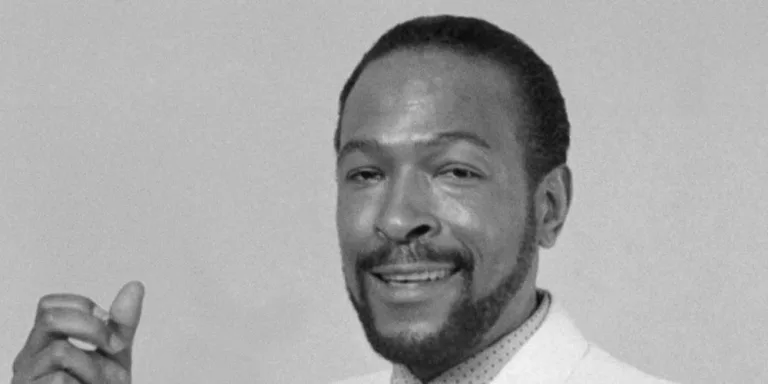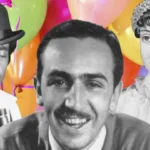Kurt Cobain’s name echoes through the halls of Music History, forever intertwined with the grunge movement that defined a generation. As the enigmatic frontman of Nirvana, he captured the angst and alienation of youth with raw honesty and Emotional Intensity. His voice, both fragile and powerful, became an anthem for millions grappling with societal pressures and personal struggles.
But Kurt Cobain biography is more than just a tale of musical triumph. It’s a complex narrative woven with threads of pain, addiction, and ultimately, tragedy. Cobain’s life was a rollercoaster ride of soaring highs and crushing lows, forever marked by the turbulent family dynamic he experienced in his youth and the relentless scrutiny that came with fame. Despite achieving global recognition, Cobain never truly found peace within himself, battling inner demons throughout his career.
His untimely death at the age of 27 sent shockwaves through the world, leaving a void in the music scene that has yet to be filled. Yet, His Legacy Endures. Nirvana’s music continues to resonate with Listeners Decades Later, serving as a timeless testament to Cobain’s genius and the enduring power of authentic expression.
Early Life and Musical Influences
Kurt Cobain’s early life was a far cry from the rockstar persona he would Later Embody. Born in Aberdeen, Washington in 1967, his childhood was marked by instability and family strife. His parents divorced when he was young, leaving him to navigate a complex Emotional Landscape. Music became an escape for Cobain, a way to channel his feelings of alienation and frustration.
As a teenager, he immersed himself in the rebellious world of punk rock, finding solace in bands like The Sex Pistols And Black Flag. Their raw energy and anti-establishment lyrics resonated deeply with him, shaping his musical sensibilities and laying the groundwork for his future work with Nirvana. Cobain’s early years were also marked by a love for drawing and painting, showcasing his artistic talents that would later manifest in his iconic album covers and stage presence.
 Michael Jordan Early Life: From Humble Beginnings to Global Icon
Michael Jordan Early Life: From Humble Beginnings to Global IconThese formative experiences – the pain of family discord, the solace of music, and the rebellious spirit of punk rock – all played a crucial role in shaping Cobain’s unique voice and perspective, which would ultimately define Kurt Cobain biography as one of both vulnerability and defiance.
The Formation of Nirvana
With a passion for punk rock burning bright and a desire to Express His Own Unique Vision, Cobain set out to form a band that would capture the raw energy and emotional intensity of his experiences. In 1987, Nirvana was born in Aberdeen, Washington, with Cobain as the lead vocalist and guitarist, alongside bassist Krist Novoselic and drummer Chad Channing. The trio’s early sound was heavily influenced by punk and hardcore, characterized by blistering guitar riffs, Driving Drums, and Cobain’s angst-ridden lyrics that resonated with a generation disillusioned with societal norms.
Their early gigs were often chaotic affairs, showcasing the band’s raw talent and untamed energy. Word of Nirvana began to spread Beyond Their Hometown, attracting attention from music enthusiasts and Industry Insiders Alike. The addition of drummer Dave Grohl in 1990 proved to be a pivotal moment for the band, solidifying their lineup and ushering in a new era of musical exploration.
With Grohl’s powerful drumming adding a dynamic layer To Their Sound, Nirvana began to experiment with different genres, incorporating elements of alternative rock, pop, and even psychedelic influences into their music. This sonic evolution would lay the foundation for their groundbreaking album “Nevermind,” which would catapult them to global stardom and forever change the landscape of popular music.
Rise to Fame and Nevermind
The release of Nirvana’s “Nevermind” in 1991 marked a seismic shift in the Music World. The album’s Lead Single, “Smells Like Teen Spirit,” exploded onto the airwaves, capturing the zeitgeist of a generation yearning for authenticity and rebellion against the polished pop of the late 80s. The song’s Infectious Energy, Raw Lyrics, and Cobain’s iconic vocals resonated with youth worldwide, propelling Nirvana to unprecedented levels of fame.
“Nevermind” became a global phenomenon, Selling Over 30 million copies worldwide and topping charts Across Multiple Countries. The album’s success ushered in the grunge era, bringing alternative music to the mainstream and inspiring countless aspiring musicians. Nirvana’s rise to stardom was meteoric, catapulting them from underground heroes to International Superstars Virtually Overnight.
Cobain, Novoselic, and Grohl found themselves thrust into the whirlwind of fame, navigating sold-Out Stadiums, Relentless Media Attention, and the pressures of maintaining their Artistic Integrity Amidst Commercial Success. While “Nevermind” cemented Nirvana’s legacy as one of the most influential bands of all time, it also marked the beginning of a complex journey for Cobain, who struggled to cope with the overwhelming weight of fame and the scrutiny that came with it.
Struggles with Addiction and Mental Health
The intense pressures of fame and the relentless touring schedule took a toll on Cobain’s Already Fragile Mental State. He grappled with anxiety, depression, and a growing dependence on heroin. Cobain’s vulnerability and honesty in his lyrics resonated deeply with fans who saw him as a kindred spirit, but behind the music, he battled inner demons that threatened To Consume Him.
His struggles were often played out in the public eye, with highly publicized incidents involving drug use and erratic behavior. Despite attempts at treatment and support from his bandmates and loved ones, Cobain’S Addiction Continued To Escalate, casting a shadow over his personal life and creative output. The weight of expectation, the constant scrutiny, and the relentless cycle of self-Destruction Took Their Toll, leaving Cobain feeling trapped and hopeless.
His music became a confessional outlet, Reflecting His Pain, despair, and yearning for escape. Songs like “Lithium” and “Heart-shaped Box” offered glimpses into his tormented soul, revealing the complexities of a man trying desperately to find peace amidst the chaos of fame and addiction.
A Lasting Legacy
Despite his tragically short life, Kurt Cobain’s impact on music and popular culture Remains Profound. His raw honesty, vulnerability, and unique artistic vision resonated with a generation searching for authenticity in a world increasingly dominated by superficiality. Nirvana’s music became the soundtrack to a cultural shift, paving the way for alternative rock to gain mainstream acceptance and influencing countless artists who followed in their wake.
Cobain’s legacy extends far beyond his music. He became an icon of rebellion, representing the angst and alienation of Youth Culture. His image – the messy hair, Oversized Flannel Shirts, and haunted eyes – became synonymous with grunge aesthetics, shaping fashion trends and influencing visual art for years to come. Though his life was cut tragically short at the age of 27, Cobain’s influence continues to inspire and resonate, solidifying his place as one of music’S Most Enduring Legends.
His Kurt Cobain biography serves as a reminder of the power of Artistic Expression, the complexities of fame, and the enduring impact that a single individual can have on the world. Cobain’s story remains a cautionary tale about the pitfalls of addiction and Mental Health Struggles, while also celebrating the transformative power of music to connect with audiences on a deeply human level.










